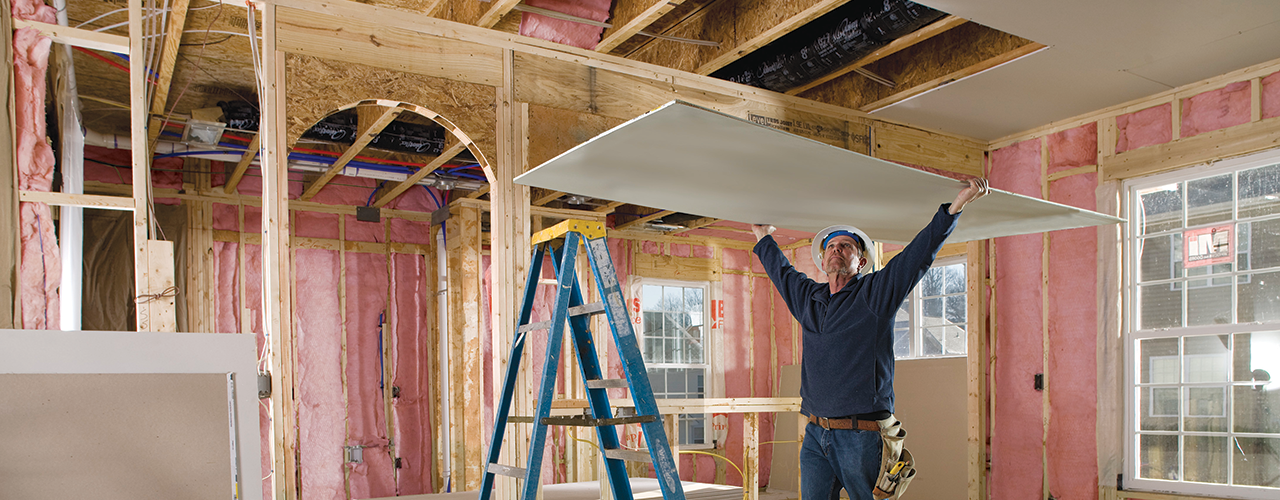Drywall construction is a fundamental part of modern building practices. Whether it’s a new home, office, or commercial space, drywall is almost always used to create interior walls and ceilings. It is popular because it’s cost-effective, easy to install, and creates a smooth, clean surface ready for painting or finishing. In this article, we’ll break down what drywall construction is, its benefits, the installation process, and important considerations for both homeowners and professionals.
What Is Drywall?
Drywall, also known as plasterboard or gypsum board, is a panel made of calcium sulfate dihydrate (gypsum) typically sandwiched between thick sheets of paper. These panels are manufactured in standard sizes, usually 4 feet wide and varying in length. Drywall is used to cover framing, creating a flat surface for interior walls and ceilings.
It replaced the traditional lath-and-plaster method because it is faster and more efficient. Instead of waiting days for plaster to dry, drywall can be installed and finished in a matter of hours or days, depending on the size of the project.
Benefits of Drywall Construction
There are several reasons why drywall is widely used in construction today:
Affordability: Drywall is much less expensive than many other wall finishing options. It offers a low-cost solution without compromising quality.
Speed of Installation: One of the biggest advantages of drywall is how quickly it can be installed. Skilled workers can install sheets quickly, and the mudding and taping process takes significantly less time than plastering.
Repairable: If a section of drywall gets damaged, it can be patched easily. Whether it’s a small hole or a larger area, drywall repairs are straightforward and don’t usually require replacing entire walls.
Fire Resistance: Most drywall panels contain additives that increase fire resistance, making them a safer choice for residential and commercial buildings.
Sound Insulation: Drywall can be layered or paired with insulation to improve soundproofing between rooms.
The Drywall Installation Process
The process of drywall construction typically follows a few key steps. Here’s a simplified breakdown:
- Framing
Before drywall can be installed, the structure of the wall or ceiling must be in place. This usually involves wooden or metal studs spaced 16 or 24 inches apart. Electrical wiring, plumbing, and insulation are also installed at this stage. - Hanging the Drywall
Once the framing is ready, drywall panels are cut to size and screwed or nailed into the studs. Care is taken to align seams and minimize gaps. - Taping and Mudding
After the panels are in place, drywall tape is applied to the seams. Then, joint compound (commonly called “mud”) is spread over the tape and screw holes. This process may be repeated two or three times to create a smooth surface. - Sanding
Once the mud is dry, it’s sanded down to a smooth finish. This step is critical for achieving a clean, professional look, especially if the wall will be painted. - Priming and Painting
After sanding, the surface is primed and then painted or finished according to the design plan.
Types of Drywall
Drywall construction isn’t one-size-fits-all. Different types of drywall are used depending on the environment:
Standard Drywall: Used for most residential interiors.
Moisture-Resistant (Green Board): Ideal for bathrooms, kitchens, and basements.
Fire-Resistant (Type X): Used in areas where fire resistance is required by code.
Soundproof Drywall: Made with additional layers for improved sound isolation.
Mold-Resistant Drywall: Designed for high-humidity areas to prevent mold growth.
Choosing the right type of drywall is essential for durability and performance.
Common Mistakes to Avoid
While drywall installation might seem straightforward, there are some common mistakes that can lead to long-term issues:
Incorrect Screwing: Overdriving or underdriving screws can weaken the hold or leave visible marks.
Poor Joint Finishing: Rushing through taping and mudding can lead to uneven surfaces.
Skipping Primer: Paint adheres poorly to unprimed drywall, leading to peeling or uneven coloring.
Improper Moisture Management: Using standard drywall in bathrooms or kitchens can lead to mold and mildew issues.
Maintenance and Repair
Drywall is relatively low-maintenance, but it can be damaged by impacts, water, or settling. Patching small holes is simple with a bit of joint compound and sanding. For larger holes, a patch kit or replacement panel may be needed. Water damage, on the other hand, often requires replacing the affected area entirely to prevent mold growth.
Regular inspections and timely repairs help extend the life of drywall surfaces and keep them looking new.
Sustainability in Drywall Construction
Today, there is growing interest in environmentally friendly building practices, and drywall manufacturers have taken steps to meet these demands. Many companies now offer drywall made with recycled materials. Some products also feature low VOC (volatile organic compound) emissions, which improve indoor air quality.
Additionally, drywall waste can often be recycled instead of going to landfills. Builders and contractors are encouraged to reduce off-cuts during installation and recycle scrap materials whenever possible.
Final Thoughts
Drywall construction is an essential part of modern building. Its affordability, ease of installation, and flexibility make it the preferred choice for interior wall and ceiling construction across the world. Whether you’re renovating a home, building a new office, or managing a commercial build-out, drywall provides a reliable and efficient solution. Understanding the types, benefits, and proper installation methods helps ensure you get the best results for your project.
In summary, drywall construction remains a smart, sustainable, and effective approach to interior building. By selecting the right materials and following best practices, contractors and homeowners alike can enjoy long-lasting, professional-quality results.
